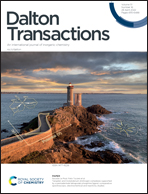Engineering NiMoO4/NiFe LDH/rGO multicomponent nanosheets toward enhanced electrocatalytic oxygen evolution reaction†
Abstract
Rational hybridization of two-dimensional (2D) nanomaterials with extrinsic species has shown great promise for boosting the electrocatalytic oxygen evolution reaction (OER). To date, the rational design and engineering of heterojunctions based on three or more components has been rather limited. Herein, by taking advantage of the high intrinsic activity of NiFe layered double hydroxide (LDH), strong synergistic effects between different components, and good electronic conductivity of reduced graphene oxide (rGO), we demonstrate the successful synthesis of NiMoO4/NiFe LDH/rGO nanosheets. As a proof-of-concept demonstration, the multicomponent nanosheet catalyst with a well-modified electronic structure is applied to boost the electrochemical OER and achieve decent electrocatalytic activity in 1 M KOH electrolyte, which can deliver a current density of 10 mA cm−2 with an overpotential of merely 270 mV and a small Tafel slope of 76.2 mV dec−1, which are markedly superior to those of the commercial RuO2 catalyst (303 mV, 131.9 mV dec−1). This work is expected to provide new insights into furnishing multi-component heterostructures with extended functionalities and more advantageous merits.



 Please wait while we load your content...
Please wait while we load your content...